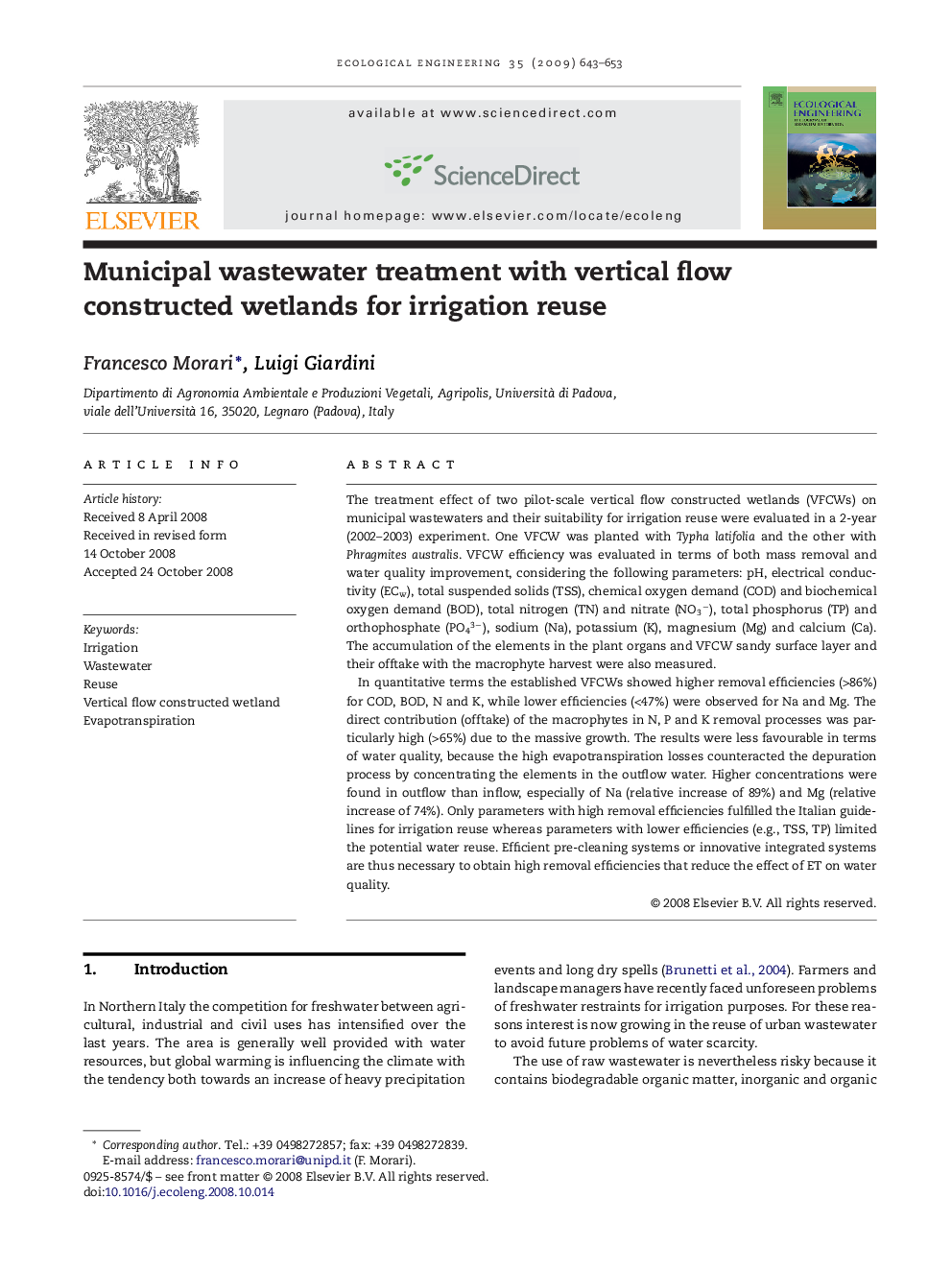| Article ID | Journal | Published Year | Pages | File Type |
|---|---|---|---|---|
| 4390934 | Ecological Engineering | 2009 | 11 Pages |
Abstract
In quantitative terms the established VFCWs showed higher removal efficiencies (>86%) for COD, BOD, N and K, while lower efficiencies (<47%) were observed for Na and Mg. The direct contribution (offtake) of the macrophytes in N, P and K removal processes was particularly high (>65%) due to the massive growth. The results were less favourable in terms of water quality, because the high evapotranspiration losses counteracted the depuration process by concentrating the elements in the outflow water. Higher concentrations were found in outflow than inflow, especially of Na (relative increase of 89%) and Mg (relative increase of 74%). Only parameters with high removal efficiencies fulfilled the Italian guidelines for irrigation reuse whereas parameters with lower efficiencies (e.g., TSS, TP) limited the potential water reuse. Efficient pre-cleaning systems or innovative integrated systems are thus necessary to obtain high removal efficiencies that reduce the effect of ET on water quality.
Related Topics
Life Sciences
Agricultural and Biological Sciences
Ecology, Evolution, Behavior and Systematics
Authors
Francesco Morari, Luigi Giardini,
